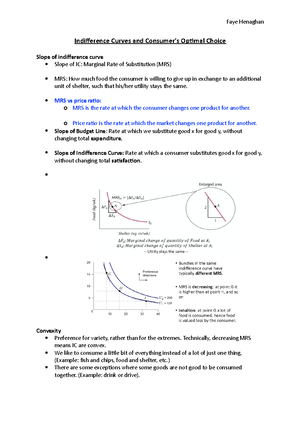A trial balance is an inventory of all of the balances within the nominal ledger accounts. It serves as a check to ensure that for every transaction, a debit recorded in a single ledger account has been matched with a credit in another. If the double entry has been carried out, the total of the debit balances should always equal the entire of the credit balances. Furthermore, a trial balance forms the idea for the preparation of the primary financial statements, the balance sheet and the revenue and loss account. To avoid pointless posting errors it is essential to keep the number of ledger accounts to a minimum.
- The postings to the management accounts are from the summary totals in the books of prime entry.
- The process includes including debit and credit score items, finding the distinction, and recording it as stability carried down and balance introduced down.
- Edgar Edwards’ checking account in the general ledger has now been balanced off.
- The document discusses the importance of balancing off accounts in business, utilizing Lisa’s Boutique as a case study for instance the consequences of poor bookkeeping.
- Notice that by doing this, it is already deducted from Retained Earnings (a capital account), hence won’t require a closing entry.
The information covers adding income and deposits, subtracting payments and withdrawals, and evaluating these to your current stability. Includes suggestions and learn why this habit is vital to private monetary success. The doc outlines the method of balancing and closing accounts, specializing in the Trial Balance (TB) which lists all accounts with balances on the end of a financial period. It explains the steps for closing off earnings assertion accounts and balancing assertion of economic place accounts, along with examples and procedures for making certain accuracy within the accounting cycle.
What Are Closing Entries?
To shut expenses, we merely credit the expense accounts and debit Revenue Summary. Momentary accounts include all income and expense accounts, and also withdrawal accounts of owner/s within the case of sole proprietorships and partnerships (dividends for corporations). The accounts in the assertion of monetary position don’t disappear on the end of the accounting interval. The complete of the income accounts for an accounting interval is included in the statement of profit or loss for that interval, so the account is at zero – ready for postings for the following period. Separating these accounts from the principle ledger removes a large amount of detail and permits totally different employees to work on totally different aspects of the accounting records.

In different words, the income and expense accounts are “restarted”. Closing journal entries are made on the end of an accounting period to organize the accounting records for the subsequent period. They zero-out the balances of short-term accounts through the current interval to give you fresh slates for the transactions in the subsequent period.

Cima Ba3 Syllabus B Recording Accounting Transactions – Balancing Off Accounts – Notes 9 / 35
At the month end the difference between the whole debits and credit on every account represents the stability on the account. We discuss the process of balancing the account in our post on balancing off accounts. Welcome to our complete assets focused on the essential talent of checkbook management and reconciliation. These resources are perfect for use in a classroom setting, but they’re also versatile enough to help self-paced studying.
There are some ways to separate the overall ledger into groups of accounts with common traits, these are more totally mentioned in our subsidiary ledgers in accounting publish. For a small enterprise the most typical way to cut up the ledger is into 4 subledgers. The financial institution checkbook reconciliation kind is often discovered on the again of your monthly bank balancing off accounts assertion.
Double Entry Bookkeeping is here to provide you with free online data that can assist you learn and understand bookkeeping and introductory accounting. The example shows the electricity expense account which is on page 21 of the ledger. The name of the account ‘Electricity Expense’ and its account code 640 are additionally proven in the heading. Required Balance off a ledger account (Bank a/c & Cash a/c only) as at 31 Jan 2016. OpenLearn works with other organisations by offering free programs and resources that assist our mission of opening up instructional alternatives to extra people in additional locations.

As you will notice later, Income Abstract https://www.personal-accounting.org/ is ultimately closed to capital. To close that, we debit Service Income for the total quantity and credit Revenue Summary for a similar. Due To This Fact, the process for balancing off capital accounts is completely different from that of balancing off revenue accounts.
Edgar Edwards’ bank account within the general ledger has now been balanced off. The debit side was greater than the credit side, due to this fact leaving a debit steadiness of £9,a hundred and fifty. The balance on the bank account reflects that £10,000 has come into this asset account and £850 has gone out to depart the debit balance of £9,one hundred fifty. This is why on the other facet to the ‘Balance c/d’ figure, a ‘Balance b/d’ figure is required to symbolize a closing debit balance. Utilizing the rules above we will now steadiness off all of Edgar Edwards’ nominal ledger accounts starting with the bank account. The ledger accommodates accounts for all objects listed within the accounting equation, i.e. belongings, liabilities and fairness.
Utilizing the foundations above, all the other accounts in Edgar Edwards’ basic ledger accounts can now be balanced off. In essence, we’re updating the capital balance and resetting all short-term account balances. Earnings and bills are closed to a brief clearing account, often Revenue Abstract. Afterwards, withdrawal or dividend accounts are also closed to the capital account. Now for this step, we need to get the balance of the Revenue Abstract account. In step 1, we credited it for $9,850 and debited it in step 2 for $8,790.



